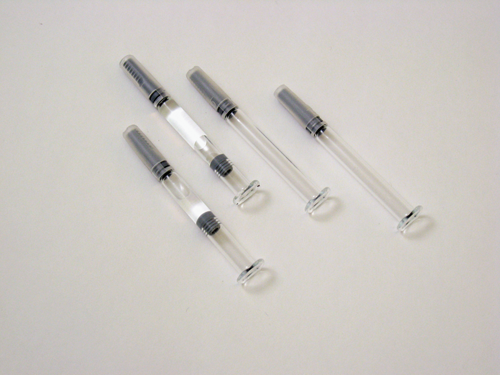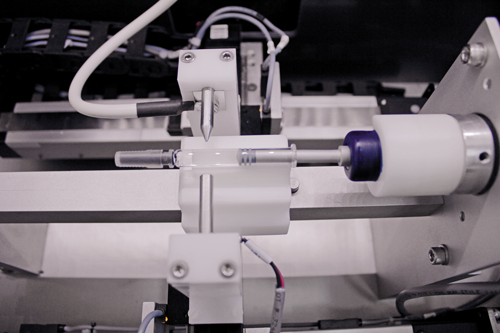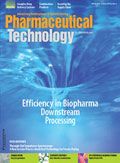Evaluating the Sterile Barrier of Complex Drug Delivery Systems
Methods of validating and assuring container closure integrity are crucial for quality assurance.
New injection-delivery systems, such as auto-injectors, recombinant syringes, and retractable needles, have introduced new challenges to package validation and product development, particularly for container closures. These delivery systems may have multiple closure points and more complex manufacturing processes with increased opportunities to introduce manufacturing-related defects. For complex delivery systems, the final system is an orchestra of the individual components working together. Each component coming in contact with the critical product path must be validated to provide a reliable sterile barrier. With additional fitment contact points comes greater risk that one of the fitments will contribute to a container-closure integrity (CCI) failure. Taking a clear approach to developing the methods used to validate and assure CCI early in the process is crucial in providing a solid platform for product launch.
Although quality-by-design principles have been widely adopted throughout the development process, new package-design trends have created significant gaps in the ability to assure quality. This trend is most prevalent in parenteral delivery systems and can be a problem in various types of systems, from standard prefilled syringe systems to complex, recombinant drug-delivery devices. When designing a robust drug-delivery system, one must consider the design for the complete lifecycle of the product. Developing an effective plan for CCI testing (CCIT) of the delivery system is a cornerstone in meeting the overall goal of quality assurance.
Defining a sterile barrier
CCI is defined as the ability of a package to prevent ingress of microorganisms, chemicals, and environmental contaminants and to retain the contents of the package, thus ensuring the product meets physiochemical and microbiological specifications. CCIT is focused on detection of leaks in the sterile barrier of a package. A maximum allowable leakage limit must be defined, because most package types demonstrate at least miniscule gaseous leakage, in addition to permeation, even when optimally designed and assembled.
CCIT is a growing regulatory concern for all packages, and new, complex delivery systems introduce unique challenges. Before a CCIT method can be established, the sterile barrier for each package format must be defined. Although a package may have several seals, a single barrier should be identified as the sterile barrier. For a glass vial, this barrier includes the rubber stopper and glass body of the vial. The crimp contributes to the barrier but is not a portion of the sterile barrier field.
Certain component fitments may have multiple closure points as the sterile barrier, such as the ribs on the plunger of a prefilled syringe, which can be seen in Figure 1. One closure point is in contact with the product. The outer closure point is in contact with the non-sterile environment. The space between the ribs represents a unique no-man’s land of sterility. If one is breached, what does this mean in terms of CCI? Is the barrier breached? A syringe tip presents similar controversy, with a complex sterile barrier mechanism that includes the needle shield and syringe-tip cap (see Figure 1). One contact point protects the sterility of the product, and the second contact point provides a sterile barrier to the delivery contact point (e.g., needle or nozzle). Integrity of the overall system can be determined to assure there is no leakage of the closure system. Between the closure points, however, there is often space that must remain sterile and free from contamination by outside contaminants and from the product itself. Interclosure sterile space must be challenged for sterility, and few tests exist to challenge the integrity of this space on a final assembled component. When designing a delivery system, incorporating multiple sterile barrier closure points seems logical in an effort to reduce the risk of a breach of the sterile barrier. The multiple closure points, however, can present challenges that are both difficult to test and manage. Ultimately, for each package format, a clearly designed and defined sterile barrier is an important step in establishing CCI.

Comparing CCIT methods
Conventional test methods include microbial-challenge testing using media-filled packages and a blue-dye ingress test using product- or placebo-filled packages. Neither approach, however, achieves the goals of CCIT effectively. Microbial ingress and dye tests are probabilistic methods that are qualitative, subjective, and not reproducible. These methods are not sensitive to sterility requirements of the package and product. Considerable sample preparation and manipulation is required. These methods use little or no instrumentation and require significant operator handling and intervention.
The blue-dye method has been the traditional approach to package integrity testing, but poor accuracy, complex methodology, and subjective test results have contributed to its declining popularity. The International Organization for Standardization (ISO) and US Pharmacopeia (USP) methods for blue-dye testing (1, 2) provide no clear statement in terms of reliability and accuracy, and neither reliably detects breaches of integrity down to the critical-to-quality leak size. Various studies have confirmed significant variability in deploying either the USP or ISO blue dye methods (3, 4). Regulatory bodies continue to seek more quantitative test measurements that provide an accurate, objective approach to assuring package integrity. Subjective and destructive methods are inherently not repeatable or reproducible.

To obtain reliable and accurate results, leak-test methods should use qualified instruments that are validated for sensitivity, accuracy, robustness, repeatability, and reproducibility. Test methods that can be validated for accuracy and sensitivity are more easily transferred or duplicated from site to site. Non-subjective and quantitative test solutions provide clear assessment of quality assurance. Technologies that provide non-subjective, quantitative, non-destructive test results include helium, vacuum decay, and high voltage leak detection (HVLD). Figure 2 shows a HVLD system scanning a syringe, which rotates between a high-voltage probe and a ground probe. The high-voltage current will pass through even a small breach and be detected by the instrument. Vacuum decay and HVLD are established methods used by the pharmaceutical industry to provide reliable and sensitive CCIT of sterile barrier packaging. These methods provide the ability to test for CCI against calibrated standards and transfer validated methods from site to site and across various package and product groups.
Assembly of the final delivery system, such as an auto-injector, may introduce cracks and other defects in the body of the sterile barrier. A key step in validating the assembly assures that the sterile barrier has not been affected in any way by the assembly process. Methods using blue dye would require disassembly for inspection. HVLD can be used for final testing of some assembly types. Final assembly of syringes are best tested using vacuum decay, with sensitivities down to defects of 10 microns depending on the syringe substrate.
Achieving quality assurance
For CCI quality assurance, the critical-to-quality defects and sterile barrier must be defined, and a test method that is accurate, reliable, and sensitive enough to meet the requirements should be chosen. Although CCI is a small and simple step in the vast space of quality assurance, it is crucial for protecting the product beyond manufacture to use by the consumer.
References
1. ISO, ISO 8362-5 Injection containers and accessories (Geneva, 2008).
2. USP, General Chapter <381>, “Elastomeric closures for injections,” (US Pharmacopeial Convention, Rockville, MD, 2009).
3. H. Wolf, et al., PDA J Pharm. Sci. Tech. 63 (5) 472-488 (2009).
4. H. Wolf, et al., PDA J Pharm. Sci. Tech. 63 (5) 489-498 (2009).
About the AuthorOliver Stauffer is vice-president and COO, and Heinz Wolf is general manager, both at PTI, Packaging Technologies and Inspection, www.ptiusa.com.

Drug Solutions Podcast: A Closer Look at mRNA in Oncology and Vaccines
April 30th 2024In this episode fo the Drug Solutions Podcast, etherna’s vice-president of Technology and Innovation, Stefaan De Koker, discusses the merits and challenges of using mRNA as the foundation for therapeutics in oncology as well as for vaccines.